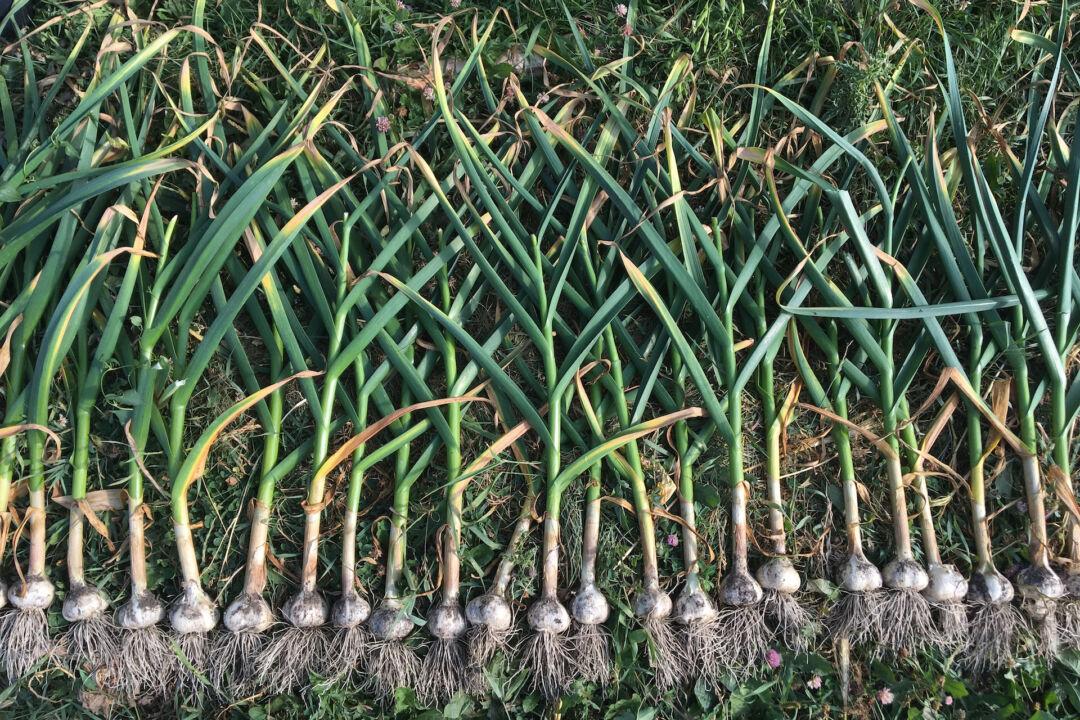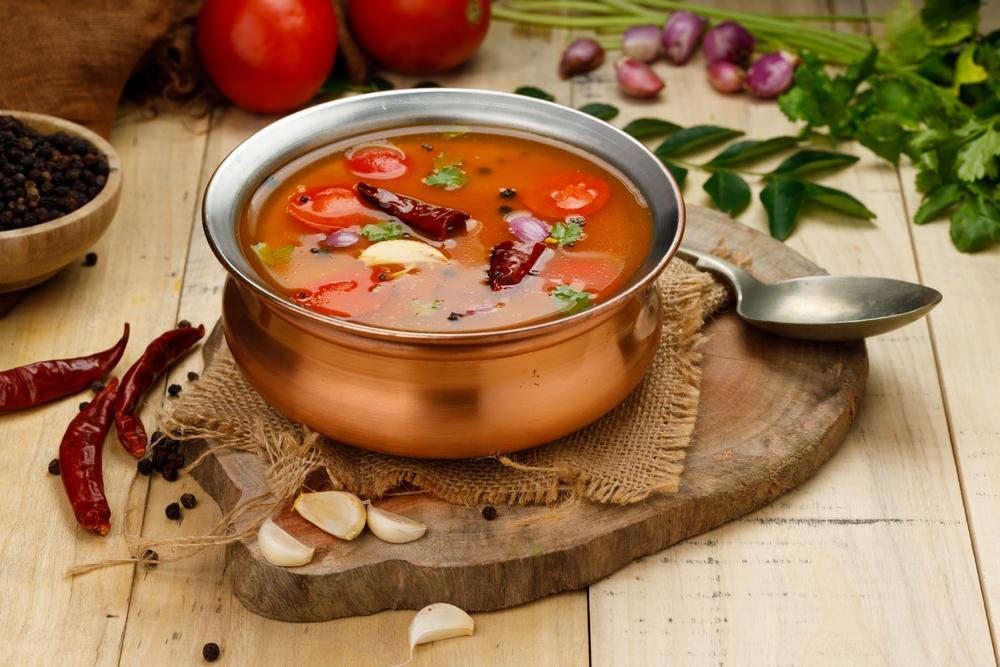Congee is a pan-Asian dish beloved wherever rice is grown. It goes by other names, and comes in many different flavors, but the core principle never changes. Cook the rice into a starchy cloud, flavored with the likes of ginger, chives, and hoisin sauce. Eat it when comfort food is called for.
I live in the Northern Rockies, where the spuds grow diverse and delectable, and farmers like Big Nancy bring multi-colored sacks to the winter market. Nothing against rice, but I wanted to make congee with local starches. I bought a bunch of different varieties, including Huckleberry, Mozart, and Rose Finn, along with a few other wintertime ingredients, and brought them back to my laboratory of culinary science.
Souping Essentials
The single most important tool to have for soup-making is a big pot with a pasta boiler insert that you can remove, along with its contents, from the bubbling cauldron. I make a lot more soup than pasta, and I use the pasta insert every time. It allows for the cooking of every part of the plant or animal in your soup, including parts some find unsavory, like bones or cartilage of a take-out chicken, or the root end of an onion or the non-root end of a carrot, or the butt of celery. You can cook those parts as long as you wish, letting their goodness into your soup, and then remove them whenever you like.Potato Broth Possibilities
My favorite way to use Spud Bisque is to start by frying diced carrot, celery, and onion in olive oil. Then add diced meat from the chicken whose bones were in that pasta boiler. After about 10 minutes, add some Spud Bisque. Simmer 15 minutes. If you like chicken pot pie, you'll love this stew.The other day, I was making Spud Bisque in the pasta cooker, and as luck would have it, the kids wanted spaghetti. They got rigatoni because that’s what I had, and I had to make their pasta the old-fashioned way, boiled in a regular pot and poured through a colander. I topped it with a sauce made with rehydrated tomatoes I had dehydrated last summer.
The next day, I reheated the leftover pasta, beginning with some chopped bacon in the pan, like one should do when reheating pasta. When the bacon was crispy, I added the noodles. It was going fine, but there wasn’t quite enough sauce, and it seemed to be heating too quickly, and the thick sauce was in danger of burning. I dumped a ladle full of potato broth into the pan, and disaster was replaced with the pleasing murmur of starchy potato broth invading the rigatoni and sauce.
Cooks often use starchy water from the pasta pot to thicken the pasta sauce. Potato broth thickens the sauce even more, giving each morsel of rigatoni a creamy flavor reminiscent of gnocchi, a pasta made with mashed potato. The bacon with which I had started the project, intended as a nod to carbonara, also turns out to be a perfect complement to potato soup.
My leftover pasta, smothered in a luxurious red sauce, soft as gnocchi, was a joy to behold and consume—in that order, because it was so pretty I had to photograph it, though it turned cold before I could eat it. Reheated with another ladle of Spud Bisque, the dish was all the more delish.

Spud Bisque
This soup is beloved by the kids, who are the toughest taste-testers in town, and by cooks, who realize this potato bisque can go in anything. My wife even makes potato sourdough rolls with the stuff. Make a double batch and freeze some for later. I wouldn’t give it more than three days in the fridge.- 2 pounds potatoes, peeled and cubed
- 2 large onions, sliced in half end to end
- 1 stick butter
- 1 cup white wine
- 3 large carrots, cut in half
- 3 stalks of celery, or the butt end of a celery head after the stalks were cut off
- 1 sprig fresh thyme, or 1 tablespoon dried
- Optional: stew meat or bones, or beef stock
While that happens, preheat the oven to 350 degrees F.
Place the onions in a small pan, cut sides down. Add the butter and wine and bake for about 2 hours.
When the potatoes are done cooking and have cooled to the point where you can work with them, pour the pressure-cooker contents, including the water, into the basket of a pasta cooker. With an appropriate utensil, mash the potatoes in the pasta basket.
Add the carrots, celery, and thyme to the mashed potatoes in the basket, and enough cold water to cover everything. If using meat, bones, or stock, add them here. (But if you want the cleanest, purest potato stock for use in cooking other dishes, then you might want to skip this. The potato stock is the flavor and the thickener that you can add to whatever is next.) Bring to a simmer.
After 1 hour, stir it very well to help the remaining potato pieces break apart. Add the onions and butter, rinsing the pan with ladles full from the pot to make sure all the onion and butter juices make it to the pot. Simmer for another hour or two. By that time, most of the potatoes will be in small enough pieces that they can filter through the pasta strainer and into the broth below.




